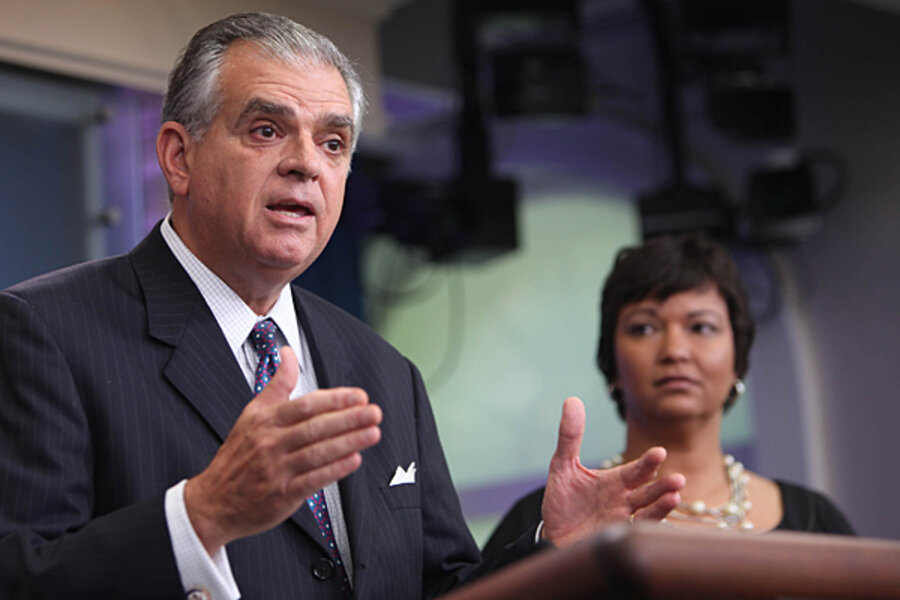Auto emissions: New greenhouse gas caps raise gas mileage standards
Loading...
The nation's first-ever law requiring a reduction in greenhouse gas emissions goes into effect today, mandating that automakers progressively chop the amount of tail-pipe gases emitted from US cars.
The first cars to be affected by the law will be automakers' 2012 lines. By 2016, model year greenhouse gas emissions must not exceed an average of 8.8 ounces per mile – a 21 percent reduction from today's levels. To get there, vehicles' gas mileage will need to achieve on average 35.5 miles per gallon fleetwide – a 40 percent improvement from current levels.
Costs to the industry for that four year period are projected to be about $52 billion – adding about $950 to the price of a car. But consumers should be able to save enough over three years to pay for the extra cost, said Transportation Secretary Ray LaHood and Environmental Protection Agency Administrator Lisa Jackson in a joint statement Thursday.
Overall, they said, the program would result in $240 billion in savings from reduced fuel costs, oil imports, and pollution.
“These historic new standards set ambitious, but achievable, fuel economy requirements for the automotive industry that will also encourage new and emerging technologies,” said Transportation Secretary Ray LaHood in prepared remarks. “We will be helping American motorists save money at the pump, while putting less pollution in the air.”
What the law will do
The rule, which results from a compromise plan between the Obama Administration, states, and automakers last May, is expected to save the average buyer of a 2016 model-year car about $3,000 over the life of the vehicle, the EPA estimates. At the same time, the rule will cut the nation's oil use by 1.8 billion barrels over the vehicles' lifetimes. It is the equivalent of removing 42 million cars from the road, Ms. Jackson said.
Cars, trucks, and other transportation sources represent a big and growing share of US greenhouse gas emissions – about 28 percent of all US greenhouse gases in 2006, the EPA reports. Transportation was the "fastest-growing source" of greenhouse gases in the nation, it said, representing nearly half of the increase in total US greenhouse gas emissions since 1990.
Environmental and consumers groups applauded the move. "This represents the single largest step this country has taken to address our oil addiction, save consumers money, and cut greenhouse gas emissions from cars in at least three decades," says David Friedman, research director of the vehicles program at the Union of Concerned Scientists. "It's a historic move."
States in the lead
Yet he and others agree the national standards would have been unlikely without pressure from the 13 states led by California, whose legal and other actions pushed the matter to the forefront of the national climate and energy policy debate.
In response to state suits, the US Supreme Court found greenhouse gases could be considered air pollutants within the meaning of the Clean Air Act in a landmark 2007 decision. In December 2009, the EPA concluded that heat-trapping gases endangered public health and welfare. Now, under the act, the EPA has taken the first step to regulate those emissions.
Automakers were under financial and political pressure to back President Obama's program to cut tailpipe emissions and reduce fuel use last May. They were on board Thursday, too.
“America needs a roadmap to reduced dependence on foreign oil and greenhouse gases, and only the federal government can play this role,” Dave McCurdy, President and CEO of the Automobile Alliance, which represents US and other automakers, said in a statement.
Regulation of large, stationary sources of carbon dioxide, such as power plants would not begin until next year and would only apply to "a small number of sources" at that time, Jackson said.
Efforts to remove EPA authority to regulate greenhouse gases have been bubbling in the Senate, but have not emerged.





